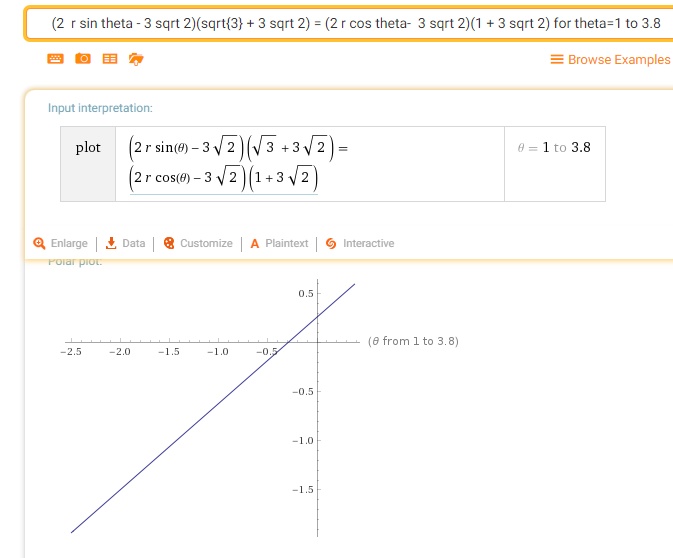How do you write the polar form of the equation of the line that passes through the points #(3,pi/4)# and #(2,(7pi)/6)#?
1 Answer
Explanation:
I have to keep pointing out that most trig only uses two triangles. This is another 45/45/90 and 30/60/90 problem.
A line through rectangular coordinates
We could stop here but let's clear the fractions and a minus sign.
Check: Alpha


